
10 minute read
HERE’S WHY WE NEED ZINC
HERE'S WHY YOU NEED ZINC -
AND HOW TO MAKE SURE YOU'RE GETTING ENOUGH
Advertisement
This crucial mineral plays a vital role in overall health. Liz Connor finds out some of the best dietary sources...
Zinc plays a vital role in overall health and function, from aiding our sense of taste and smell and helping heal wounds efficiently, to supporting the immune system and much more.
Because zinc activates the enzymes that break down proteins in viruses and bacteria, a deficiency can mean we' re susceptible to infection and associated symptoms.
While there's no research to suggest zinc supplements can prevent coronavirus - or any other supplement for that matter - ensuring all our nutritional needs are met, primarily through a varied healthy diet, is vital for helping overall immune function.
HOW MUCH ZINC DO WE NEED?
Dr Sarah Brewer, medical director at Healthspan (healthspan.co.uk), explains th e EU recommended intake (NRV) for zinc is 10 mg per day (although the NHS puts daily guidelines as 9.5mg a day for men aged (19-64 and 7mg a day for women) - but says many of us don't realise we aren't getting enough.
Brewer notes that, while we tend to pay a lot of attention to vitamins, minerals are equally important - although we often might be less aware of them.
However, while getting enough zinc is important - it's also important not to take too much, as levels can build up in our system potentially resulting in serious side-effects. The NHS advises you shouldn't take more than 25mg of zinc supplements a day, unless advised to do so by a doctor.
HOW CAN I GET ZINC IN MY DIET?
"Most adults obtain sufficient amounts of zinc in their diet from eating a wide range of different foods, each containin g moderate amounts of zinc, rather than from a few foods containing high levels of zinc," says Anne de la Hunty, a senior scientist at the British Nutrition Foundation (nutrition.org.uk).

With that in mind, here, de la Hunty shares a few easy ideas to add to your supermarket trolley:
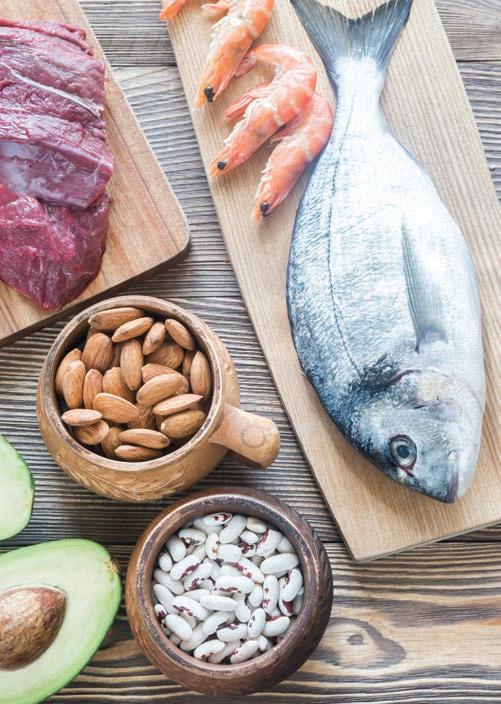
1. Meat
"As well as being a good source of protein and iron, red meat is a good source of zinc; it accounts for a third of all zinc in the UK diet. What's more, the zinc in meat is readily absorbed," says de la Hunty.
"Stewed, extra lean, mince provides around 59% of the RNI (Reference Nutrient Intake) for an adu lt man and 80% of the for a woman. Other great sources include grilled lamb chops, which provide around 3.6mg for every 100g.
"I advise you choose lean cuts of meat and cut any fat off meat before cooking, to reduce the amount of saturated fat," she adds. "However, too much red and processed meat can increase the risk of some cancers. For this reason, many health experts recommend that, on average, w e should eat no more than 70g red and processed meat a day, or 490g a week."
2. Fish and shellfish
"Fish, such as tuna and salmon, and shellfish provide around 3% of the zinc in the UK diet. Both crab and prawns are is a good source of well absorbed zinc. However, it's always important to make sure the shellfish is well cooked, especially if you're pregnant, to reduce the risk of food poisoning," she say s.
"Health experts also recommend we should consume oily fish, such as salmon, mackerel and sardines, once a week. A 140g portion of sardines, for instance, would provide around 46% of the RNI for an adult woman."
3. Nuts and Seeds
"Pine nuts and roasted cashew nuts are really high in zinc (6.5mg for every 100g and 5.7mg for every 100g respectively) and also contain high amounts of protein and unsaturated fats, which are also important components of a balanced diet," says de la Hunty. "A small handful of roasted cashew nuts make a good zincboosting snack.
"Look out for seeds and tahini paste, made from sesame seeds too, especially if you're looking for alternative zinc sources to meat.
Toasted seeds, sprinkled on salads, add flavour and crunch, as well as zinc, to your salad. Nuts and seeds are, however , high in calories and so should not be eaten in large quantities as snacks."
4. Milk and Cheese
"A pint of semi-skimmed milk, with breakfast cereal and in tea and coffee over the day, can provide around 2.3mg zinc to the average adult.
Cheddar cheese is also a good source of zinc, as well as providing protein, calcium and iodine.
"Cereal products can also bulk up your numbers. Although most cereals do not con tain high levels of zinc, they are an important source in the diet, because they're eaten in large quantities."
5. Legumes
"Legumes, such as peas, beans and lentils contain zinc, although not in very high amounts either. Plus, they also contain phytates, which reduce the overall amount that the mineral is absorbed by the body," says de la Hunty.
"Nevertheless, when consumed in larger amounts, as the m ain p rotein source in a meal, they can make a significant contribution to our intake. For example, a 200g portion of reduced sugar, baked beans would provide 10% of the RNI for an adult man.
"A good serving of peanut butter, hummus made from chickpeas and tahini paste, and fried tofu are also good sources for vegans.
"Beans, peas and lentils are good alternatives to meat because they're low in fat and hi gh in fibre, protein, vitamins and minerals. Add them to soups, stews and ragus to make your meal go further," she suggests.
"And an extra tip? Soaking dried beans overnight before cooking them can deactivate the phytate and increase the amount of zinc that is absorbed."

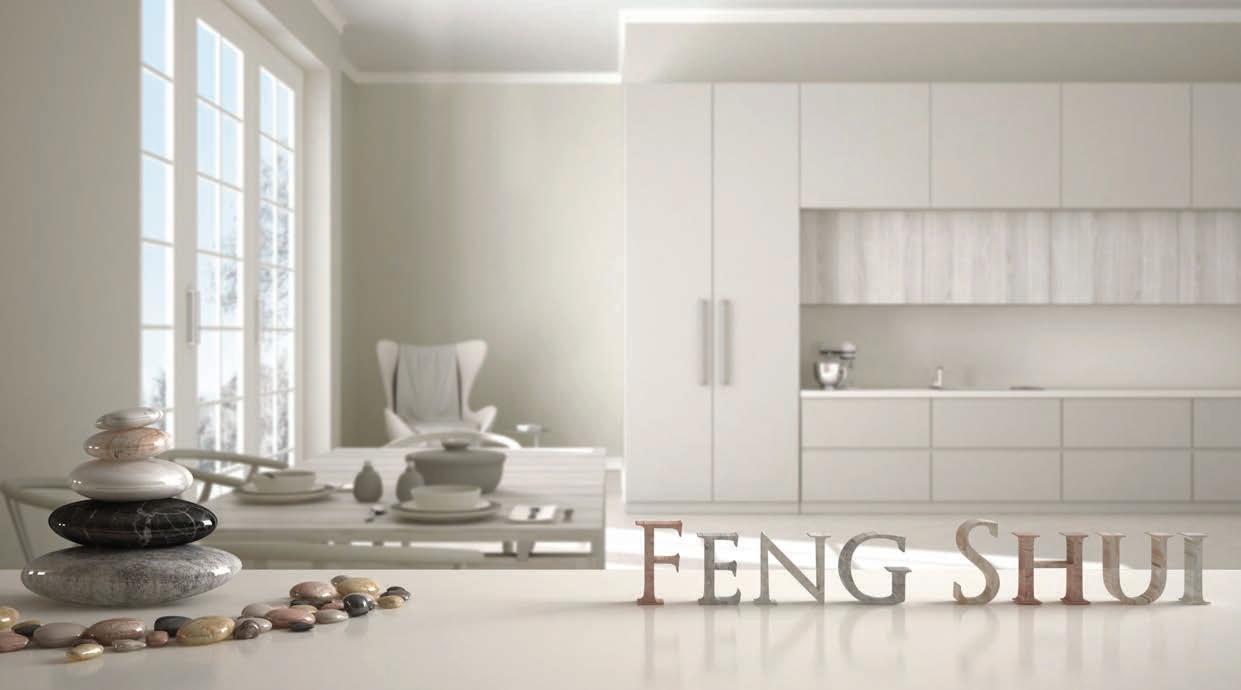
SIMPLE WAYS TO BRING MORE Feng Shui
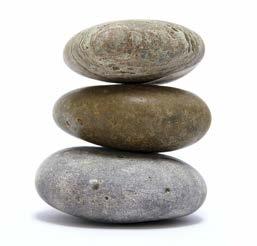
INTO YOUR HOME
Finding calm and positive energy at home has never felt more important, says Sam Wylie-Harris...
With a growing focus on finding comfort at home and turning our living spaces into calming sanctuaries, this year has reignited our interest in Feng Shui.
The ancient Chinese practice is all about creating harmony in a space - but goes far beyond using colour and light to create the right ambience, for instance.
Strategically placing furniture to promote wellness, using artwork and living plants to get t he right vibes and keeping rooms clear of clutter all factor.
Based on the belief there's a continuous flow of 'chi' - or energy - between an individual and their surroundings, thinking about how to arrange our objects to promote good work-life balance has additional appeal right now, with so many more of us adapting to life without a commute. There's plenty of scope for Feng Shui to feature in gardens a nd p atios too, for an extra boost when you throw open the doors or look out the window.
"The practice of Feng Shui aims to strike a balance between the self and the natural world. It can be applied to any room of the home, particularly outdoor spaces, where there's already a connection with nature," says Rosheen Forbes, commercial activity & events leader at IKEA UK & Ireland.
"Adding plants and greenery is an easy place to start, and depending on the 'bagua' (centre of energy), the colours you choose can increase the energy in certain areas. Calculating your bagua map is simple but needs approaching differently depending on your home," Forbes adds.
"If you live in an apartment, align the bottom of the bagua map with the front entrance wall. If you live in a house, use a compass and place the 'career area' (bottom middle on the bagua map) where your compass indicates the north.
"So, when planning your garden, think about planting blue and purple flowers in your 'wealth corner' (south east), and pink, white and red flowers in the 'relationship corner' (sou th west) to increase the energy around love and partnerships.
"Furthermore, outdoor mirrors can be used to attract abundance. With its curved shape and smooth flowing lines, an oval mirror can be used to reflect the light from the sun, making the space feel bigger and brighter. For smaller spaces, place two mirrors to face each other so the light bounces off, creating beautiful brightness."
Fancy giv in g your home some Feng Shui magic? Read on for more tips on how to go about it...
THINK ABOUT MUTED TONES AND TEXTURES
"When introducing the tools of Feng Shui into the home you need to think about adding balance and drawing energy into the room," says Wil Law, home design stylist for John Lewis.
"You can start with colours - using muted tones mixed with natural materials and soft furnishing accessories i mmediately creates a calming effect. Try a natural wooden armchair with muted colours on the walls and textured vases and ornaments with a soft rug or carpet underfoot," says Law.

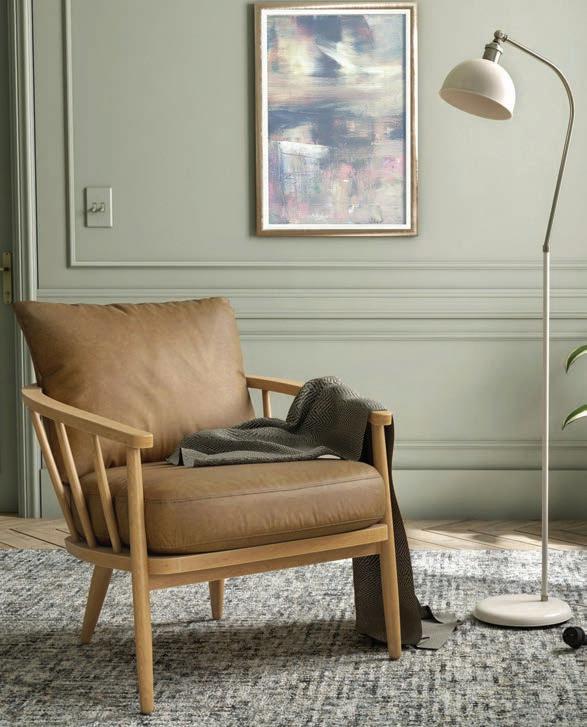
KEEP COLOURS POSITIVE IF YOU'RE NOT INTO NEUTRAL
Of course, colour is subjective, and what's positive and calming to one person may be undesirable to another. Alex Whitecroft, head of design at I Want Wallpaper, suggests using co lou rs that reflect your personal happiness - but try to avoid darker colours or too much black, as these can sap positive energy flows throughout the home.
"Brighter colours will have an immediately uplifting effect, so this may be the perfect opportunity to create a feature wall. You might even want to go so far as using your 'commanding position' (the spot furthest from the door and not in direct line w ith it) wall as the accent - and earn yourself double Feng-Shui points while you're at it."
In Feng Shui, green is the colour of renewal, fresh energy and new beginnings and is believed to help relieve stress.
If going green with walls isn't possible, Whitecroft says to look for accessories to enhance good energy. Living plants, brightly coloured cushions or a wall decoration will brighten a room and tie th e look together in one fell swoop.
TRY TO SEPARATE WORK AND RELAXATION
Another key Feng Shui tip is to keep your work space separate from your relaxation area, to help balance your work and home life and enable you to properly 'switch off' while working from home. Out of sight, out of mind can only be a positive move on many levels - signalling when it's time to end those video conferencing calls, light a candle and chill out.
And just in case you're wondering, candles should be placed in the bagua of your home - as well as releasing daily stress, their glow brings fiery energy and will keep the 'chi' harmonious and happy.
But back to the business of a work station: slim, movable tables, deep enough for a laptop and bits and bobs will maximise your desk area, while taking up less room - and they can be rolled away when it's time to log o ff.
AIM FOR MINIMAL CLUTTER
The starting point for any positive environment is to keep kitchen work surfaces and table tops as clear as possible. This might mean having a good sort-out, and investing in some suitable storage solutions. "Old magazines, dusty ornaments and general bric-a-brac once placed in haste and never removed will not contribute to a positive energy environment," says Whitecroft.
"If you find it hard to part with sentimental clutter, find a box to neatly pack it away. Do be cautious though - simply moving clutter from one spot to another won't do much to aide your energy flow. Donate to charity shops or find a way to bid farewell to items in order to clear your space, and ultimately, your mind."
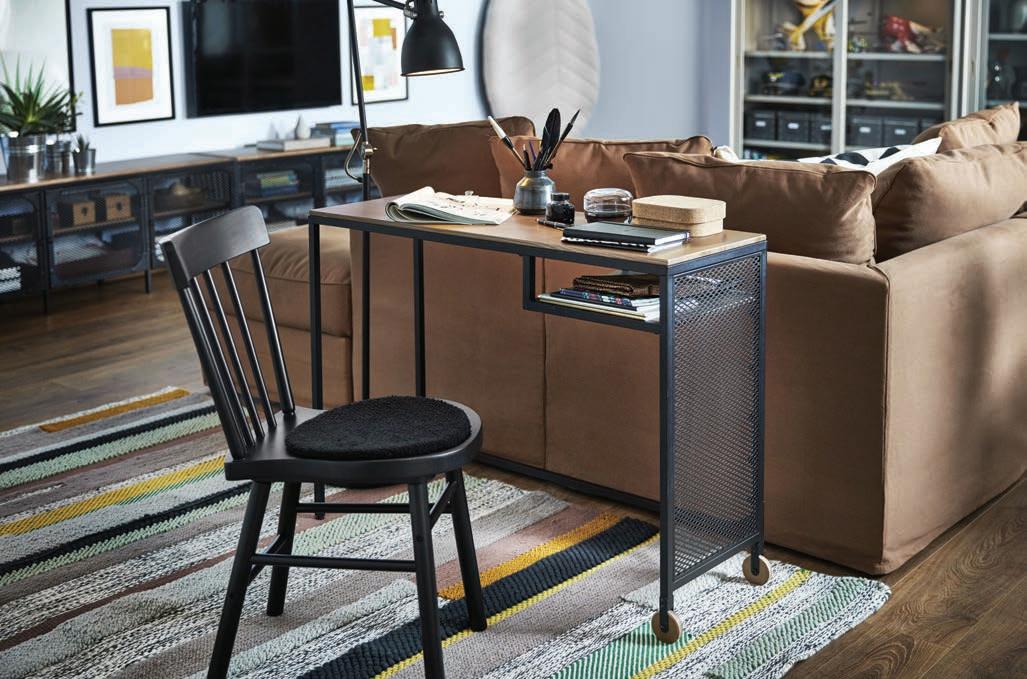
BRING THE OUTSIDE IN
If you're short on outdoor space, stress not. Think about bringing t he outside in with some greenery. "Plants are a brilliant way to bring energy into the room, add colour and cleanse the air. They look great in natural baskets or ceramic vases and succulents are easy to care for," says Law.
Last but not least, another important Feng Shui tool to build a soothing environment is to consider carved furniture with smooth edges, over angular and sharp designs. Sharp edges an d corners, otherwise known as bad energy 'sha', could have a negative effect when you're unwinding - and right now it's all about maximising the feel-good factor where we can and letting positive vibes flow!











